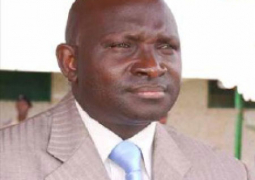
He also called for sustained interagency collaboration and urged security personnel to uphold the highest standards of professionalism and integrity.
The SIS tour has been lauded for its inclusive approach, with community members and stakeholders describing the engagements as transformative. Many residents openly acknowledged past misconceptions about the Agency, expressing newfound appreciation for its transparency, reforms, and commitment to national stability.
Sister security services also commended the SIS for its continued support and cooperation, particularly through the deployment of Liaison Officers across the regions. These officers have played a pivotal role in enhancing coordination and fostering mutual trust among security institutions.
The improved public perception and strengthened interagency collaboration have been widely attributed to the proactive leadership of DG Sowe, whose foresight and reform-driven agenda continue to reshape the SIS into a more responsive and citizen-focused institution.
As the tour progresses, the SIS reaffirms its role within the broader national security architecture, working alongside other agencies to safeguard The Gambia’s peace and stability.
The tour, which spans the North Bank (NBR), Central River (CRR), Upper River (URR), and Lower River Regions (LRR) is part of a broader reform agenda aimed at decentralising security services and fostering trust between the state and its citizens.
Local authorities and residents have warmly welcomed the initiative, describing it as a timely and transformative presence. “This is not just infrastructure—it’s a symbol of inclusion and protection,” remarked one regional governor during a community engagement session.
Read Other Articles In Headlines
Ministry of Health reacts to corruption allegation
Dec 29, 2021, 1:32 PM




